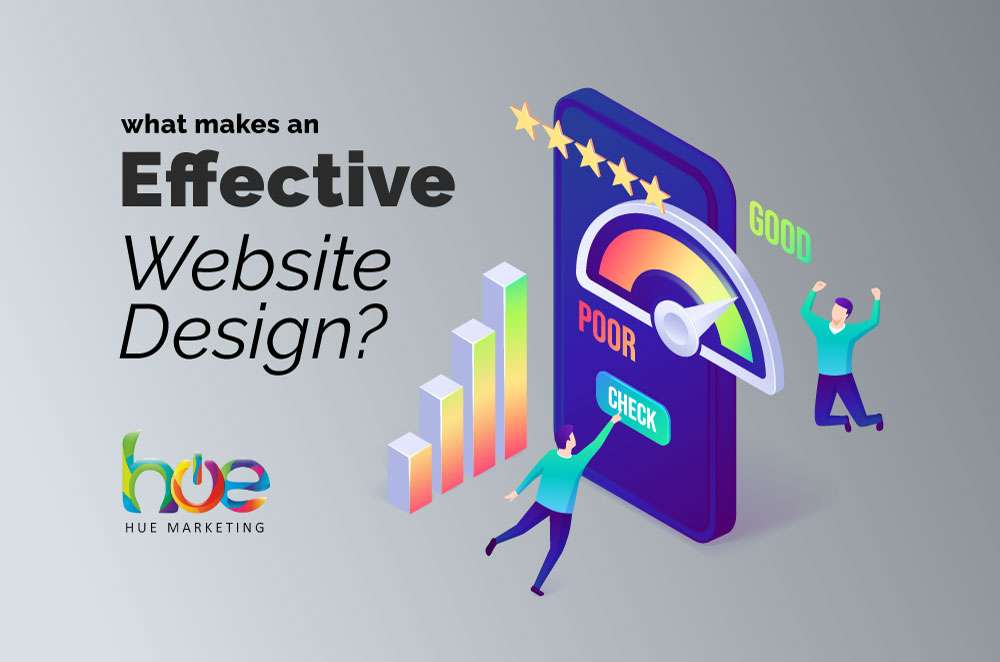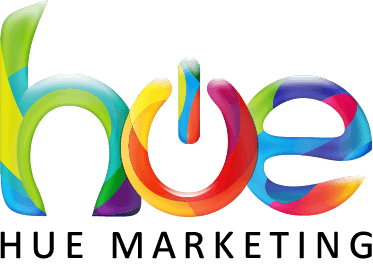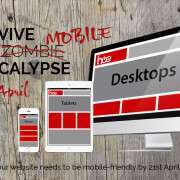4 Steps to Transform Your Website into a Powerful Marketing Tool

Having a website is an absolute must for any business aiming to thrive online. It has been for some time now, but let’s be clear; a visually appealing website alone won’t cut it (and don’t get me started on Facebook business pages).
Just being online isn’t enough it needs to be an effective marketing tool.
Recommended reading: Marketing basics, what’s your business game plan?
Every Business Needs A Website
It’s no revelation that every business can benefit from having its own website. It’s been that way since the early 2000s. Initially, just having a company website set you above the competition, and it didn’t take long before everyone had one. Instead of the ‘have vs have not’, it was all about whose site was better.
As websites became even more accessible, the number of new websites created per day increased to a point where in 2023 there are approximately 252,000 new websites created every day.
With around 1.12 billion websites worldwide the challenge for customers to find the most relevant website is the seemingly impossible task that search engines like Google and Bing try to organize. Customers have also evolved, experts at navigating reviews, product comparisons, and evaluating your business at a detailed level like never before. A customer’s buying journey starts with research and it’s very likely a business wins or loses a sale long before a customer is even on your radar.
Even seemingly small issues like not displaying a company address, or not having a proper business email, a mybusiness@hotmail, or companyname@gmail account can be red flags if customers think a business is not permanent or professional.
Just having a website isn’t enough. It needs to be competitive, customer focused with a clear business objective. And it must be in keeping with current Search Engine Guidelines.
With customers’ expectations, buying habits, and the overwhelming options they have to choose from, search engines are also constantly improving in a bid to display the best page result for any given search. How search engines assess and rate websites is currently a 176-page document of General Guidelines on how web pages are assessed, evaluated, and ranked. (And it continues to evolve).
It stands to reason that businesses must also evolve and adapt along with their customers and the main search engines they use to research their purchases.
When you invest in a website, you need to be sure that you’re not just getting a website that looks nice but also ticks all the essential criteria for an effective business website.
If you don’t know what to look for, a bad website can look a lot like a good website. How do you tell the difference?
So whether you’re evaluating your own website or considering investing in a brand new one, the following post holds the key to unlocking your online presence and has the potential to propel your business forward and maximize your return on investment in advertising efforts. Yes, it really is that important!!!
What is a Website?
Definition: “A website is a set of related web pages located under a single domain name, typically produced by a single person or organization”.
While an aesthetically pleasing layout with positive branding, responsive design, mobile-first mindset, and fast-loading page speeds are all, without question, 100% crucial aspects of any website. Add some testimonials, a video, some FAQs, a contact form, and you’ve got yourself a website. Sounds pretty good right?
If the only objective is to “have a website”. Job Done!
But there’s a problem.
Having a website should never be the objective. If you only have a website because you think you need one or because everyone else has one, you’re missing the whole point. A website is just the mechanism, a marketing tool (maybe the ultimate marketing tool) to help you achieve your true objective, your BUSINESS OBJECTIVE!
Combine Website & Business Objective
The three most popular styles of business websites have very different objectives and business integrations and require different marketing strategies to be effective.
- Beacon-style website: The objective of this website style is to provide essential information about your business, including your identity, services or products offered, contact details, business hours, and location. Its primary goal is to impress visitors and guide potential customers to easily find and reach out to you.
- Content-driven website: The objective of this website style is to passively attract customers 24/7 by providing valuable content that educates and advises visitors on potential solutions to their problems. The focus is on building trust, establishing expertise, and nurturing leads through informative and engaging content.
- E-commerce website: The objective of this website style is to serve as the primary platform for conducting sales transactions. Whether you sell products, services, affiliate products, dropshipping items, or online courses, the main goal is to facilitate seamless transactions, showcase your offerings, and provide a smooth purchasing experience.
Obviously, there are other ways to use a website for business and even combinations. Defining your website objective is an essential first step that transforms a regular website into an effective marketing tool.
The Key Components of an Effective Website:
4 Must-Haves
The transition from a good-looking website to a powerful marketing tool, designed to purposefully impact your business in a specific way has a few telltale signs to look out for.
In this post, we will embark on a journey to uncover the essential ingredients of an effective business website, and their profound impact on your business and customers, and provide you with practical insights to identify them, even if you’re not a tech wizard.
We’ll review what they are, why they are so important, how each works, and what happens if they are overlooked or executed poorly.

1. Technical On-Page SEO
Navigating the Search Engine Maze Imagine your website as a captivating destination in a vast digital landscape. To ensure it gets the attention it deserves, we must master the art of technical on-page SEO, our trusty compass in this digital wilderness. Key elements to keep in mind are:
- Well-structured URLs, titles, and meta descriptions:
Think of these as signposts that guide both search engines and visitors to the heart of your content.
Example: Just like a well-marked hiking trail, a website with clear and concise URLs, titles, and meta descriptions ensures smooth navigation and higher visibility in search results. - Strategic keyword placement throughout the content:
These keywords are the secret ingredients that attract the right kind of visitors to your website.
Example: Crafting an engaging blog post with strategically placed keywords is like composing a symphony, each note resonating with your target audience and harmonizing with their search queries. - Proper header tags (H1, H2, etc.) to organize information effectively:
Think of these tags as the chapter headings of your website, making it easier for visitors to navigate and search engines to understand your content.
Example: Just as chapter titles give structure and clarity to a book, proper header tags provide a logical flow and effortless comprehension for your website visitors.
How it works:
Consider a local boutique specializing in handmade jewelry. By meticulously optimizing their website’s structure, meta tags, and page load speed, they ensure that their stunning creations catch the eyes of potential customers searching for “unique artisan jewelry” or “handcrafted necklaces.” This strategic navigation through the digital waves ensures a steady stream of visitors, eager to adorn themselves with the boutique’s exquisite pieces.
Why you need it:
Neglecting valid technical On-Page SEO for your website can have significant consequences. Without it, search engines may struggle to understand and index your content effectively, resulting in poor visibility and low organic traffic. Your website may fail to rank well in search engine results pages, making it difficult for potential customers to discover your business. Additionally, inadequate On-Page SEO can lead to a poor user experience, as slow loading times, broken links, and inconsistent navigation hinder visitors from engaging with your site.

2. Keyword Analysis: The Language of Your Audience
Imagine you can delve into the minds of your target audience, to understand their desires, their thoughts, and the words they use to express them. That’s exactly what keyword analysis enables us to do. Let’s dive deeper into this invaluable skill:
- High-quality content optimized with targeted keywords:
This is the cornerstone of attracting qualified traffic to your website.
Example: Crafting a comprehensive guide to vegan cooking and optimizing it with keywords like “plant-based recipes” and “sustainable ingredients” ensures that health-conscious food enthusiasts find their way to your mouthwatering content. - Meta tags and image alt attributes aligned with your keywords:
These hidden gems act as guideposts for search engines, steering them in the right direction.
Example: Imagine you’re searching for the perfect hiking boots, and you come across a website where the images are labeled with descriptive alt attributes like “durable waterproof hiking boots.” Suddenly, you know you’re on the right path. - Usage of long-tail keywords to capture specific search intent:
By embracing these longer, more precise keyword phrases, you can align your content with the unique needs and desires of your audience.
Example: If you own a vintage record store, optimizing your website with long-tail keywords like “rare vinyl albums from the 1970s” will attract true music aficionados, ensuring that those who appreciate the classics find their way to your virtual shelves.
How it works:
Imagine you’re running a travel agency, specializing in adventurous hiking tours. Through meticulous keyword analysis, you discover that thrill-seekers are searching for “challenging treks” or “off-the-beaten-path adventures.” Armed with this knowledge, you craft compelling content that captures the essence of these breathtaking journeys, enticing explorers to embark on an unforgettable quest with your agency.
Why you need it:
Without understanding your target audience through keyword analysis, your content misses the mark, failing to engage potential customers. It’s like speaking a different language, disconnecting from your audience and offerings.

3. Compelling Call-to-Action (CTA)
A business website needs to be more than just a digital brochure. It should guide visitors through your business to help them make the right decisions and ultimately make a purchase; it should be a persuasive storyteller, compelling visitors to take action at just the right time. The call to action doesn’t have to be a sale, it could be to use a form, start a free trial, or even local driving directions. A good CTA guides visitors to take the next step in your sales process.
- Clear and concise CTAs that stand out on the page:
Think of these as friendly signposts, guiding your visitors toward the desired action.
For example, a button that says “Get Started Today” or “Unlock Exclusive Content” can be the gateway to a rewarding customer journey. - Placement of CTAs in strategic locations for optimal visibility:
Just as a skilled tour guide knows where to lead the way, strategic placement of CTAs ensures they are easily noticeable and accessible. Consider placing them at the end of engaging blog posts or prominently on your homepage. - A consistent and persuasive language that compels action:
Your CTAs should speak directly to your audience, addressing their needs and desires. Use persuasive language that creates a sense of urgency or offers a solution to a problem.
For instance, “Don’t miss out on this limited-time offer” or “Transform your business with our expert guidance.”
Remember, an effective CTA is like a charismatic guide, leading your visitors toward the desired destination, whether it’s making a purchase, signing up for a newsletter, or contacting your business. By infusing your website with compelling CTAs, you can motivate visitors to take action and embark on a fruitful relationship with your brand.
How it works:
Picture a fitness studio that offers online workout programs. Their website exudes energy and motivation, with vivid images showcasing the transformation stories of individuals who have embraced a healthier lifestyle. By strategically placing enticing CTAs such as “Start Your Journey Today” or “Transform Your Body,” the fitness studio motivates visitors to sign up for their life-changing programs, embarking on a transformative fitness journey of their own.
Why you need it:
Neglecting compelling CTAs means missing opportunities to guide visitors toward action. Your website becomes passive instead of active in the customer journey. Without persuasive CTAs, visitors leave without taking desired steps, resulting in lost conversions and limited growth.

4. Lead Generation:
Turning Visitors into Valuable Connections
An effective website is a gateway to building meaningful connections with your audience. By incorporating lead generation capabilities, you create opportunities to collect valuable information and nurture relationships.
A truly effective website understands the importance of lead generation as part of the overall sales picture and provides compelling opportunities for visitors to engage along the way.
As visitors find your website, not all will be ready to buy, and depending on the type of product or service you offer the decision process may take days, weeks, or even months. Being able to capture soft but qualified leads gives you additional opportunities to help and convert when your customer is ready. Let’s explore the key elements that make a difference:
- Engaging Opt-In Forms: Picture a website that greets its visitors with sleek, well-designed opt-in forms strategically placed throughout the user journey. These forms are not just functional but also visually appealing, capturing attention and encouraging visitors to willingly share their information. By making the opt-in process seamless and enticing, you can effortlessly convert visitors into potential customers.
Example: Imagine a fitness website offering a visually captivating opt-in form that promises a free e-book on “10 Easy Ways to Achieve Your Fitness Goals.” By simply entering their email address, visitors gain access to valuable resources while taking the first step towards a healthier lifestyle. - Irresistible Incentives: In today’s digital landscape, people are more inclined to provide their information if they receive something valuable in return. Effective websites leverage this understanding and offer enticing incentives to boost lead generation. These incentives can come in various forms, such as downloadable resources or exclusive offers tailored to the target audience’s needs and desires.
Example: Consider a fashion boutique’s website that offers a limited-time exclusive discount code to visitors who sign up for their newsletter. This not only encourages visitors to share their contact information but also creates a sense of exclusivity and drives immediate engagement.
This would be a good time to mention our Free Basics Marketing Guide ;) - Seamless CRM Integration: Successful lead management is the backbone of any thriving business. An effective website goes beyond merely collecting leads; it integrates seamlessly with customer relationship management (CRM) systems, allowing for efficient organization, nurturing, and tracking of valuable connections.
Example: Imagine an e-commerce platform that automatically syncs every lead captured through its website with its CRM system. This integration enables personalized follow-ups, targeted marketing campaigns, and a deeper understanding of each customer’s journey, ultimately leading to enhanced customer relationships and increased sales.
How it works:
By incorporating these lead generation capabilities into your website, you transform it into a powerful tool that not only attracts visitors but also cultivates valuable connections. Remember, it’s not just about collecting leads but about building relationships that drive long-term success.
Why you need it:
Ignoring lead generation means leaving potential relationships untapped. Your website is a missed chance to connect with interested visitors. Without mechanisms to collect information and nurture leads, you risk losing touch with potential loyal patrons.
A typical customer will visit a website multiple times before making a purchase. If you only focus on the final sale you’re missing out on the opportunity to build trust and be part of the decision process. Depending on your product, service, and customer, a hard-sell attitude can be off-putting and even considered distasteful.
Conclusion
Remember, an effective website needs to do more than be a digital placeholder for your content; it’s a captivating storyteller, a persuasive guide, and a catalyst for growth. Embrace its power, and watch your business soar to new heights.
If you’re starting fresh with a brand new website, get in touch and we’ll help you from start to finish. How to choose the right domain name, website design, hosting, and professional email addresses.
If you’ve already started or have an existing website that isn’t helping your business, it’s never too late to rectify any shortcomings. Whether your website is new or established, there are always solutions to update, fix and enhance it. Seek professional assistance to unlock your website’s potential and breathe new life into your online presence, attract more customers, and maximize growth.
Don’t let an underperforming website hold you back. Evaluate your website’s effectiveness and make the required improvements. Your website is the gateway to success in the digital age. Optimize it, connect with your audience, and watch your business thrive.
Contact us today to unleash your online presence’s true power.
Founder of Hue Marketing | Marketing Strategist | Creative Problem Solver
With 30+ years of experience, I help businesses in high-end markets solve complex challenges through strategic insights and quality-driven solutions. Based in Phuket since 2003, I focus on building long-term marketing foundations that drive brand differentiation, higher conversion rates, and lasting customer loyalty.











Leave a Reply
Want to join the discussion?Feel free to contribute!